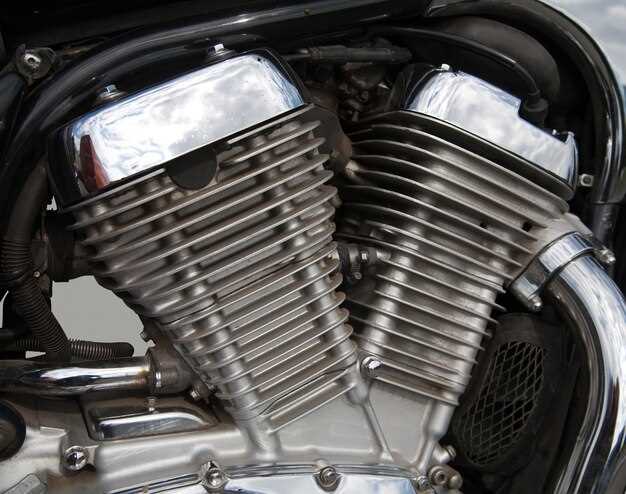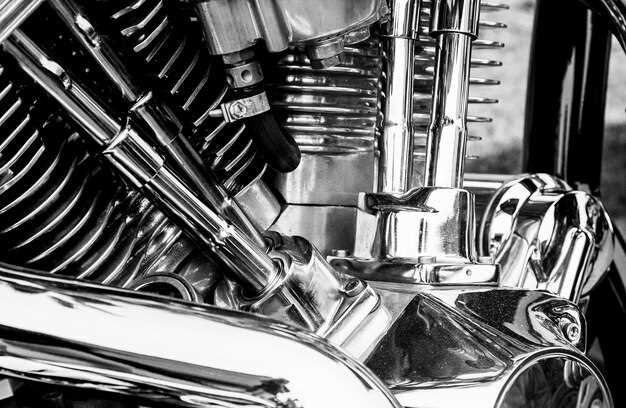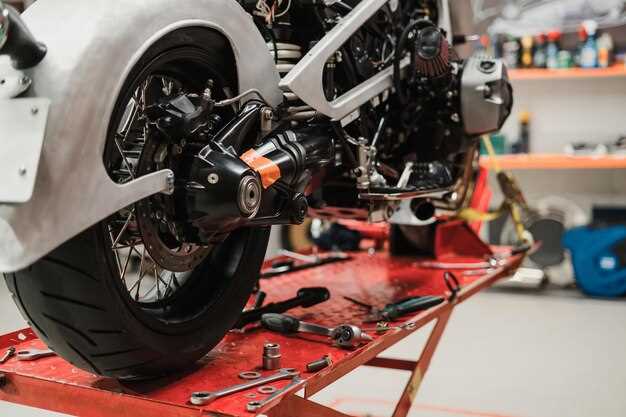
Upgrading your motorcycle’s exhaust system can significantly enhance its performance and aesthetics. By choosing to swap the factory exhaust for a custom solution, riders can experience various benefits, from improved power output to a more engaging sound. Custom motorcycle exhaust systems come in multiple types, each tailored to specific preferences and riding styles, making it crucial to understand the options available.
Different configurations, such as slip-on exhausts, full systems, and header pipes, cater to the distinctive requirements of motorcycle enthusiasts. Slip-on exhausts are popular for their straightforward installation process and instant improvement in sound and appearance. Meanwhile, full exhaust systems offer comprehensive upgrades, replacing everything from the header to the muffler for maximum performance. Understanding these types allows riders to make informed choices when considering a swap to enhance their biking experience.
In addition to performance gains, custom exhaust systems can contribute to weight reduction and improved fuel efficiency. Riders need to understand the various materials and designs available, as these factors play a significant role in the overall effectiveness of the exhaust system. By exploring the different types and their associated benefits, motorcycle owners can find the perfect match to suit their individual needs and elevate their riding experience to a new level.
Custom Motorcycle Exhaust Systems: Types and Benefits

Custom motorcycle exhaust systems play a vital role in enhancing both performance and aesthetics of a bike. By replacing the stock exhaust, riders can achieve improved airflow, resulting in a more efficient engine and increased horsepower.
There are several types of custom exhaust systems, including slip-on mufflers, full systems, and header upgrades. Slip-on mufflers are popular for their easy installation and ability to modify sound and appearance without significant engine alterations. Full systems replace the entire exhaust from the engine to the tailpipe, offering the most significant improvements in performance by optimizing exhaust flow. Header upgrades focus on the exhaust manifold, improving initial airflow and helping the engine breathe better at high RPMs.
Benefits of custom exhaust systems extend beyond performance gains. They provide a unique sound tailored to the rider’s preferences, whether seeking a deep growl or a more aggressive roar. Additionally, many custom systems are designed with aesthetics in mind, allowing riders to personalize their motorcycles while potentially reducing weight compared to stock components.
Ultimately, investing in a custom motorcycle exhaust system can lead to an enhanced riding experience, combining improved performance with a distinctive look and sound. Riders should consider their goals and preferences when choosing the right system to achieve the best results for their motorcycle.
Understanding Different Types of Custom Exhaust Systems
Custom motorcycle exhaust systems are vital for enhancing the performance and aesthetics of a bike. By swapping out the factory exhaust with a custom option, riders can experience improved power output, sound quality, and weight reduction. Here are some of the primary types of custom exhaust systems available:
-
Slip-On Exhausts:
These systems are designed to replace only the muffler section of the stock exhaust. They provide a boost in sound and performance without requiring a complete overhaul of the exhaust system.
-
Full Exhaust Systems:
These systems replace the entire exhaust setup, including headers and mufflers. They offer significant performance enhancements due to improved airflow and reduced back pressure.
-
Header Upgrades:
Custom headers increase the diameter of exhaust pipes, allowing for better gas flow. This modification enhances performance by minimizing restrictions in the exhaust path.
-
2-into-1 Systems:
This configuration merges the exhaust from two cylinders into one pipe. It improves low-end torque and overall performance, making it a popular choice for cruisers.
-
High-Performance Mufflers:
These mufflers are designed for maximum flow and minimum restriction. They are often used in racing scenarios where every horsepower counts.
Choosing the right type of custom exhaust system involves considering the desired performance benefits, sound preferences, and installation requirements. A well-matched exhaust system can significantly enhance your motorcycle’s capabilities and riding experience.
Performance Gains from Upgraded Exhaust Systems

Upgraded exhaust systems are essential for enhancing the overall performance of a motorcycle. By reducing back pressure and improving exhaust flow, these systems allow the engine to breathe more freely. This increased airflow contributes to higher horsepower and torque outputs, resulting in a more responsive acceleration.
Moreover, a custom exhaust can improve the sound profile of the motorcycle, providing a more aggressive and sporty tone that many riders desire. This acoustic enhancement can lead to a more engaging riding experience, making every throttle twist more exhilarating.
Additionally, upgraded exhaust systems often incorporate lighter materials, such as titanium or stainless steel, which reduces the overall weight of the motorcycle. A lighter bike accelerates faster and handles better, further contributing to performance gains. Such modifications not only optimize power delivery but also enhance the bike’s agility.
Furthermore, many aftermarket exhaust systems are designed to work in conjunction with performance-tuning modifications, such as air intakes and engine remaps. When these systems are paired together, the cumulative effect can lead to significant improvements in performance metrics, maximizing the potential of the motorcycle’s engine.
In summary, transitioning to an upgraded exhaust system yields substantial performance gains, enhancing horsepower, torque, and overall riding experience. These systems not only improve engine efficiency but also contribute to a distinctive sound and reduced weight, making them a worthwhile investment for any motorcycle enthusiast.
How to Successfully Swap Motorcycle Exhausts
Swapping your motorcycle’s exhaust is a rewarding process that can enhance both the performance and aesthetic of your ride. Here’s a step-by-step guide to ensure a successful installation.
1. Choose the Right Exhaust System: Before you begin, it’s crucial to select an exhaust that matches your motorcycle model. Consider factors like design, material, and intended performance gains. Research different brands to find one that fits your needs.
2. Gather Necessary Tools: Ensure you have all the tools required for the swap, including a socket set, wrenches, a torque wrench, and penetrating oil. A work stand is also helpful for easy access to the bike’s undercarriage.
3. Prepare the Motorcycle: Start by warming your bike to allow the exhaust components to expand, making removal easier. Make sure the engine is off, and allow the system to cool down before touching it.
4. Remove the Old Exhaust: Begin by detaching any heat shields or mounting brackets. Use penetrating oil on rusted bolts to prevent breaking. Carefully remove the exhaust system in sections, starting from the headers and working towards the tailpipe. Keep all bolts and hardware organized for later use.
5. Install the New Exhaust: Position the new exhaust system according to the manufacturer’s instructions. Ensure that all components align properly. Use new gaskets where necessary to prevent leaks, securing the exhaust firmly with the original hardware or any provided fixtures.
6. Check Clearances: After installation, check for any clearance issues between the exhaust and other components, such as the frame or footpegs. Adjust as necessary to prevent operation hazards.
7. Test the Performance: Start your motorcycle and listen for any unusual sounds. A properly installed exhaust should increase performance while producing a deep, resonant sound. Take a test ride to evaluate how the new system performs under various conditions.
8. Regular Maintenance: Finally, periodically check the exhaust system for any signs of wear or leakage. Ensuring that your exhaust remains in good condition will sustain the performance benefits for a longer period.
This methodical approach to swapping your motorcycle exhaust will enhance not just the performance of your bike, but also your overall riding experience.
